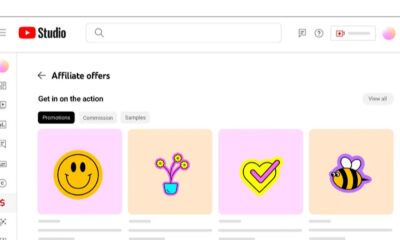“We’re focused specifically on diverse founders and it relates back to the passion I have as a female business owner, a female founder. When I look at other companies, I don’t see enough diversity at the top. I would like to see more and this is a big push to support those founders.”
Words from Tiffany Guarnaccia, founder and CEO of Kite Hill PR, a high profile agency in the adtech and martech space. Kite Hill has just launched a “Tech for Good” pitch-off, asking technology start-ups with diverse founders to apply for a three-month pro bono communications program. Companies applying must be led by women, BIPOC and/or LGBTQIA founders. They must also have closed a seed or Series A funding round and be invested in ESG (energy, social and governance), clean or green tech, or social good/social justice. Applicants must be U.S.-based.
Previous programs highlighted ESG and clean or green tech
The new offering grows out of Kite Hill’s established interest in working with ESG or clean/green tech companies. “We have a strong reputation for working with many martech and adtech clients,” said Guarnaccia, “and now we’re seeing a broader demand for ESG communications programs and that growth and demand is twofold. One, it’s within our existing client base that ‘s shifting their broader communications efforts and strategies, so there’s an opportunity there. The other part of that is the demand we’re seeing across new categories, in green tech, clean tech, broader ESG. That’s exciting when it comes to the growth of those categories.”
Examples of clients in those categories are Future Youth Records, a non-profit label taht provides an opportunity to create and distribute music that advocates for social change, and Proteus, an underwater “space station” located in a biodiverse, marine-protected location off Curaçao. Kite Hill continues to seek out clients in the ESG and clean/green tech spaces.
Read next: How inclusion can lead to diversity in marketing and communications
Calling diverse and purpose-driven founders
“The difference with Tech For Good is, it’s a pitch for purpose-driven and pro-social technology companies. Think of it as a pro bono PR onramp program for diverse and purpose-driven founders of tech businesses,” Guarnaccia said.
Early stage companies are often just starting to understand the PR and communications mix and how they can leverage it for their growth, as well as what the right metrics are, Guarnaccia explained. “So we’re offering this as pro bono, but at the same time there’s work we do that’s just about education in the industry — that’s something I personally do a lot of — mentoring, PR, PR metrics, how that comes together.” Winners will be selected by a panel of three judges.
If anything, demand for PR rose sharply with the onset of the pandemic. “We’ve continued to earn a seat at the table. In times of crisis, leaders immediately look to their PR team to be at the helm and steer their business through the storm.” She also noted statistics showing an increase in Chief Communications Officer roles.
Get the daily newsletter digital marketers rely on.
What’s in the program
“It’s about providing a bespoke three month PR program, and that initially is evaluating the messaging that the company has within the current marketplace, it’s looking at their existing communications channels,” said Guarnaccia. “It really depends on the stage of the start-up and the company overall. What I see frequently in companies of this size is they’ve done some amount of what I call DIY PR, fueled by the passion of the founders.” Kite Hill will offer an in-depth review and evaluation, identifying audiences and stakeholders, provide counseling on the best way to reach them through earned media, and then execute on that plan.
“For the most part,” she said, “that would include some mix of what our core services are. Earned media and thought leadership is usually a part of that, so we would be working with the founder to look at their messaging platform.” Another key element, she explained, is amplification of earned media through both earned and paid social.
“They’ve secured funding, they’ve started to build out their platform, they have the framework for running the business and are set up for success, but they really haven’t considered that next step which is investing in PR and marketing.”









































You must be logged in to post a comment Login